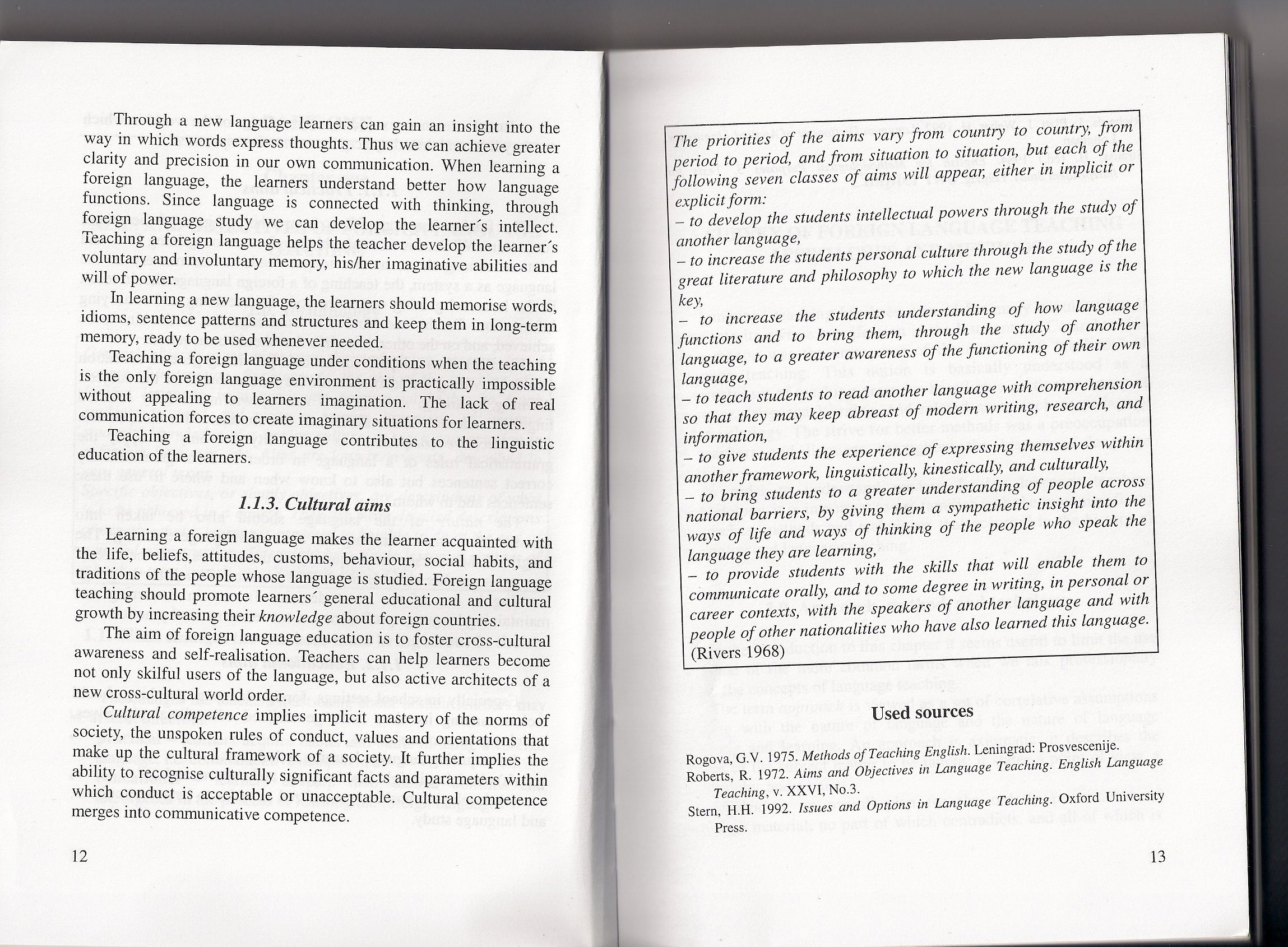skanowanie0006 (100)

Through a new language leamers can gain an insight into the way in whieh words express thoughts. Thus we can achieve greater clarity and precision in our own communication. When learning a foreign language, the leamers understand better how language functions. Since language is connected with thinking, through foreign language study we can develop the learner's intelleet. Teaching a foreign language helps the teacher develop the leamer's voluntary and involuntary memory, his/her imaginative abilities and will of power.
In leaming a new language, the leamers should memorise words, idioms, sentence patterns and structures and keep them in long-term memory, ready to be used whenever needed.
Teaching a foreign language under conditions when the teaching is the only foreign language environment is practically impossible without appealing to learners imagination. The lack of real communication forces to create imaginary situations for leamers.
Teaching a foreign language contributes to the linguistic education of the leamers.
1.1.3. Cultural aims
Learning a foreign language makes the leamer acąuainted with the life, beliefs, attitudes, customs, behaviour, social habits, and traditions of the people whose language is studied. Foreign language teaching should promote leamers' generał educational and cultural growth by increasing their knowledge about foreign countries.
The aim of foreign language education is to foster cross-cultural awareness and self-realisation. Teachers can help leamers become not only skilful users of the language, but also active architects of a new cross-cultural world order.
Cultural competence implies implicit mastery of the norms of society, the unspoken rules of conduct, values and orientations that make up the cultural framework of a society. It further implies the ability to recognise culturally significant facts and parameters within which conduct is acceptable or unacceptable. Cultural competence merges into communicative competence.
The priorities of the aims vary from country to country, from period to period, and from situation to situation, but each of the following seven classes of aims will appear, either in implicit or explicit form:
— to develop the students intellectual powers through the study of another language,
— to increase the students personal culture through the study of the great literaturę and philosophy to which the new language is the key,
— to increase the students understanding of how language functions and to bring them, through the study of another language, to a greater awareness of the functioning of their own language,
— to teach students to read another language with comprehension so that they may keep abreast of modem writing, research, and information,
— to give students the experience of expressing themselves within another framework, linguistically, kinestically, and culturally,
— to bring students to a greater understanding of people across national barriers, by giving them a sympathetic insight into the ways of life and ways of thinking of the people who speak the language they are learning,
— to provide students with the skills that will enable them to communicate orally, and to some degree in writing, in personal or career contexts, with the speakers of another language and with people ofother nationalities who have also learned this language. (Rivers 1968)
Used sources
Rogova, G.V. 1975. Methods of Teaching English. Leningrad: Prosvescenije. Roberts, R. 1972. Aims and Objectives in Language Teaching. English Language Teaching, v. XXVI, No.3.
Stern, H.H. 1992. Issues and Options in Language Teaching. Oxford University Press.
13
Wyszukiwarka
Podobne podstrony:
dpp70 Correc Foot 1 a t Home New iiwcntion uscd by leading foot specjalista builds the musclcs in th
Rnpe-Right. show the way in which a peal can be varied by tbe introduction or substitulion of calls.
40 (100) Memory Board Armoire You will need an armoire with cutout areas in doors; fabric for doors;
31 I?n Trace A Oval I Can Tracę an Oval. Tracę the oval in the basket. Color the picture.I can tracę
Slajd9 (96) REPORT BRIEF • MAY 2009 Weight Gain During Pregnancy:ReEXAMINING THE GuiDELINES TABLE 1
skanowanie0013 (100) Odstawową cech}) odróżniającą organizm roślinny od zwierzęcego jest jego nieogr
Download BIOTECNOLOGĺA AMBIENTAL PDF eBooks Free cutter cut all the way through the clay,
skanowanie0020 100 ski. W imię wolności od osób i rzeczy przygotowują niewolę umysłu. ONKA Moim zdan
47005 skanowanie0074 (3) 12.1.1.1. Sub-skills of listening Listening can be divide
więcej podobnych podstron